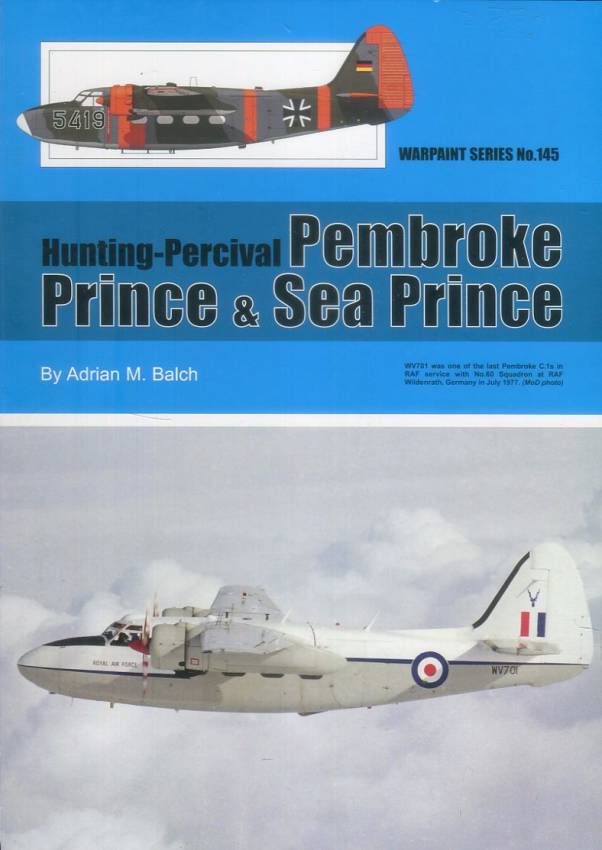Description
The Pembroke originated as a development of an idea sponsored by Lord Brabazon towards the end of World War II, when he chaired a committee whose brief was to assess the civil aviation requirements after the end of hostilities, and recommended several specifications for civil aircraft required to keep Britain ahead for both home and export sales. A twin-engined transport emerged from Percival called the Merganser in 1947. This was refined and in 1950 the Prince was born, being immediately snapped up by companies as there was nothing similar on the market at the time. The Royal Navy were quick to order the type as a communications aircraft and could see the potential for it as a navigation trainer. With an extended nose for radar and other equipment, Percival were quick to assess that as being suitable. Named the Sea Prince, the Royal Navy ordered three of the early short-nosed variant as the Sea Prince C1 for communications, forty-one of the T.1 version built for navigation and anti-submarine training, and four C.2s as a transport version of the Sea Prince T1. The RAF, seeing this interest, finally ordered forty-five of the type naming it ‘Pembroke’, the last of which was completed in February 1958. The Pembrokes were used for light transport and communications, and were also used as pilot trainers and flying classrooms. Overseas, ten countries ordered the type for similar roles in their Air Forces in Australia, Belgium, Denmark, Finland, Germany, Sudan, Sweden, Rhodesia, Thailand and Zambia. This is another Warpaint by author Adrian Balch, comprehensively illustrated with over 100 top quality photographs from his extensive archives, once again being illustrated by accurate quality colourful profile drawings by artist Sam Pearson including 5-view line drawings/plans making this a must for the aviation historian and modeller.

